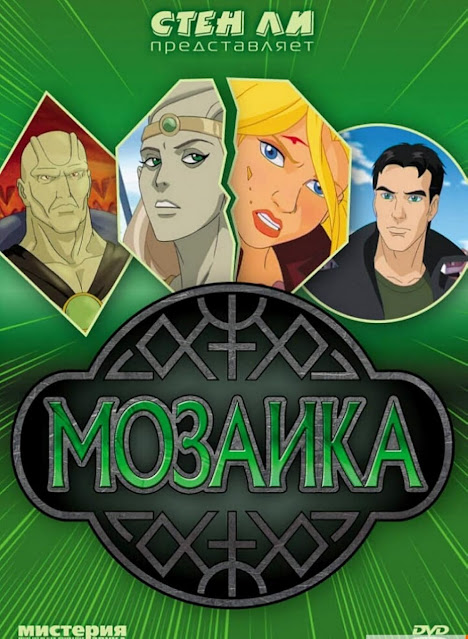PHENOMENALITY: *marvelous*
MYTHICITY: *fair*
FRYEAN MYTHOS: *adventure*
CAMPBELLIAN FUNCTION: *cosmological, psychological*
The script for MINDWARP-- one of three DTV films produced for the short-lived Fangoria Films label-- was executed by the same writing-team that worked on 2003's TERMINATOR 3, John Brancato and Michael Ferris. I've seen MINDWARP dismissed as nothing more than a gore-film, and I must admit it was surely structured so that FANGORIA magazine would be able to play up the grottier sights. But as with T3, the script shows the authors' strong familiarity with the tropes of sci-fi.
Young woman Judy (Marta Martin) lives in a computer-controlled biosphere beneath the surface of a future-Earth ravaged by atomic warfare. Because the small population of the biosphere can't be permitted to travel in the polluted "Death Zones," the populace is kept "plugged in" to the computer's fantasy-scenarios. Judy's mother is perfectly happy to pass her days in such dreams, but Judy rebels. She wants to know more about her missing father, but her mother won't reveal anything. However, when the computer learns of Judy's rebelliousness, it exiles her to the surface.
The inexperienced young woman is almost slain by mutated, cannibalistic humans called "Crawlers," but a lone hunter named Stover (Bruce Campbell) rescues her. He just has time to explain some of the exigencies of living in the real world, when the two of them are attacked and abducted by Crawlers.
Instead of being devoured, Judy and Stover are taken before the Seer (Angus Scrimm), a masked but non-mutated human who's managed to control the mutants with a phony religion. Unfortunately, not only does the Seer's concubine Cornelia (Elizabeth Kent) resent the presence of a potential female rival, the Seer turns out to Judy's missing father. Further, since even a lot of non-mutated humans are sterile, Judy's dad is willing to commit incest in order to propagate.
In many ways MINDWARP feels like a slightly less sleazy version of a Roger Corman space opera. As Stover, Bruce Campbell provides the fighting-scenes, but though Martin's Judy has no combat-skills, she puts a lot more moxie into her dramatic scenes than do most B-film actresses.
To be sure, there's a "Big Reveal" at the end, in that Judy wakes up from another fantasy-scenario, back in the biosphere, so nothing that happened to her on the surface actually transpired. Nevertheless, even though the combative elements of the movie take place in the heroine's imagination, I still deem MINDWARP a combative film.




















